#Native American Cowboy Fiction
Explore tagged Tumblr posts
Text

BOOK REVIEW: #DreamWheels by #RichardWagamese. An extraordinary story, cowboys and Indians with a twist. Gorgeous prose.
#bookstagram#am reading#Indian Horse#Ojibway Fiction#Native American Fiction#Native American Cowboy Fiction#Cowboy Fiction#Cultural Heritage Fiction#Coming of Age Fiction
0 notes
Text
FEMALE MOVIE/TV RECS (PART 2 / HISTORICAL FICTION/NON-FICTION)
got inspired from a recommendation post so decided to make a list of movies and shows with female-centric stories/female protagonists. since i can't post all of the genres in one post, i'll split it into multiple posts and y'all can save or add to the list as you wish. (disclaimer: i have watched most of these, but i only know about the existence of others. not every movie/show on these lists will be my recommendation. my recommendations will be beneath the list with reasons. also some of these are way better than others in terms of storytelling/performance--which is why i'll list my faves separately):
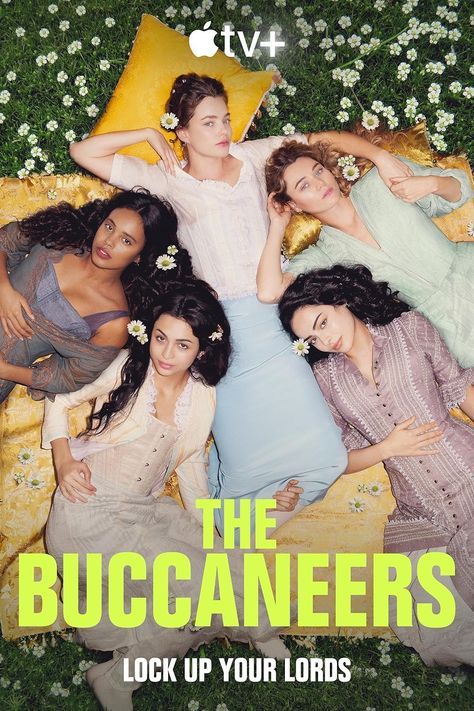
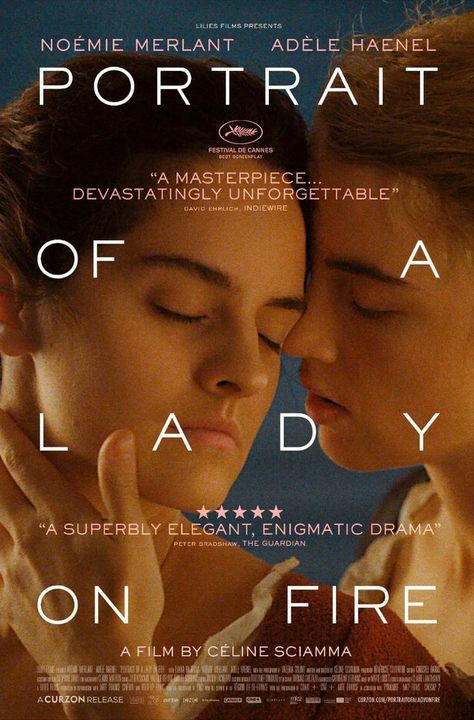
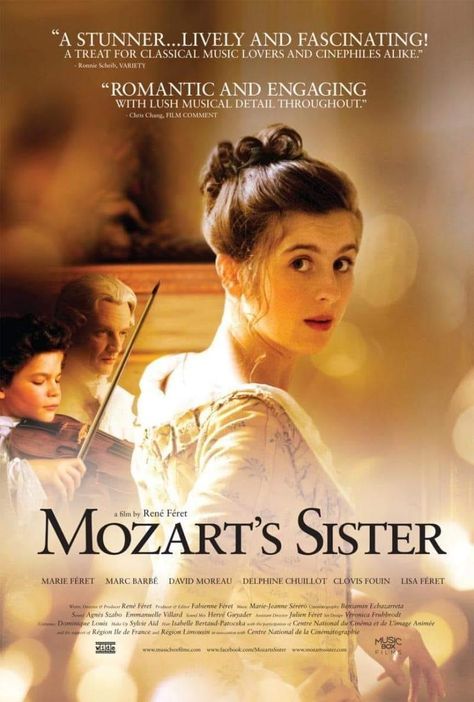
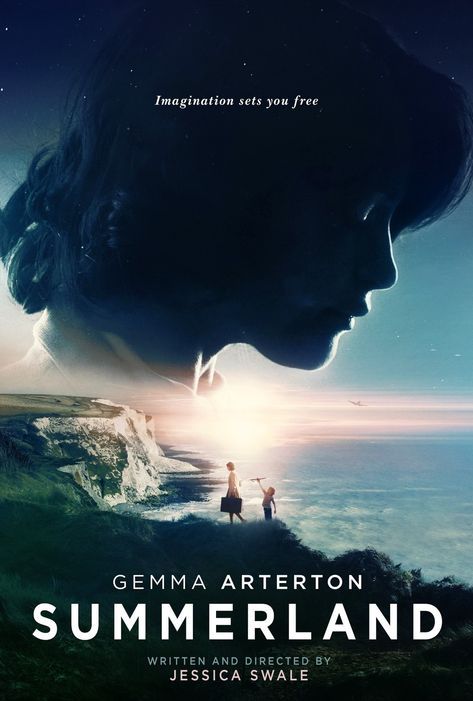
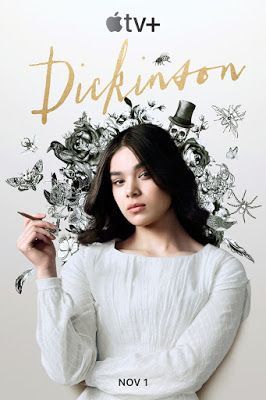
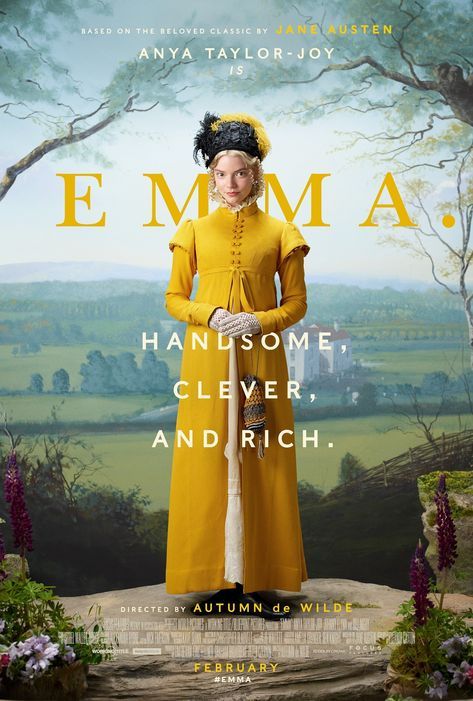
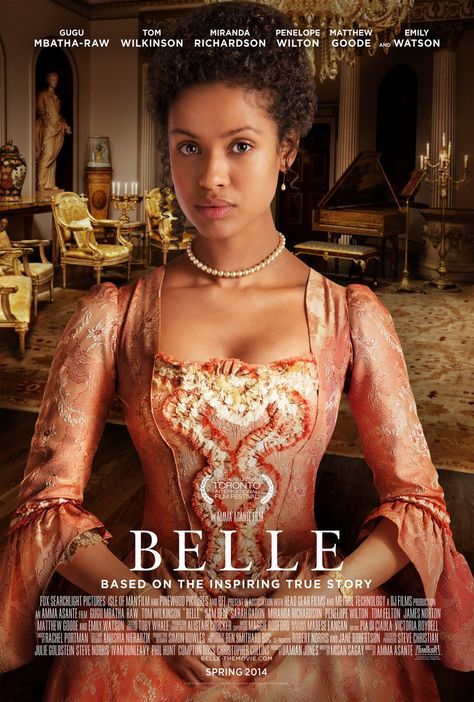
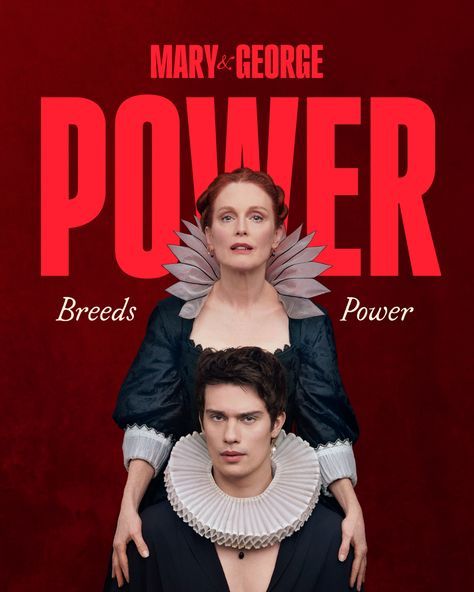
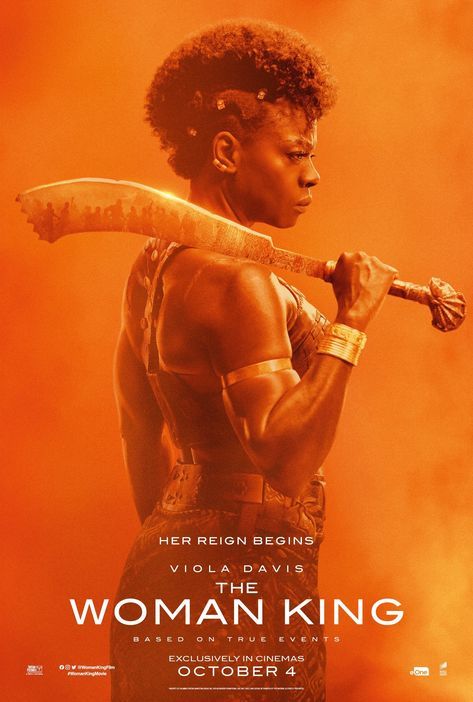
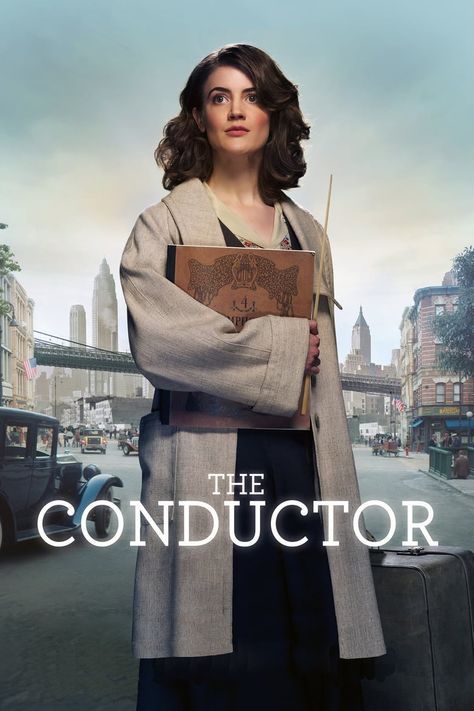
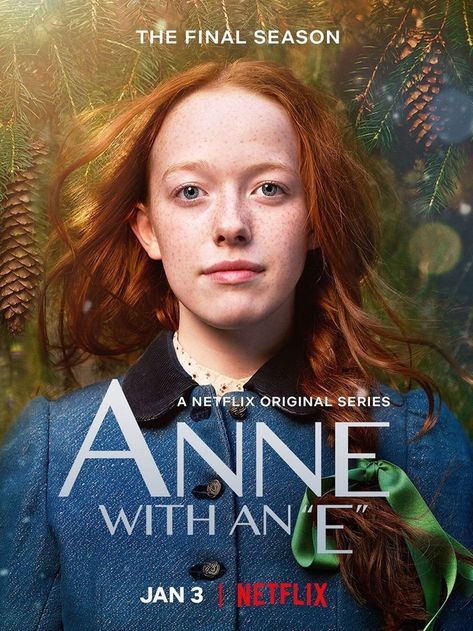
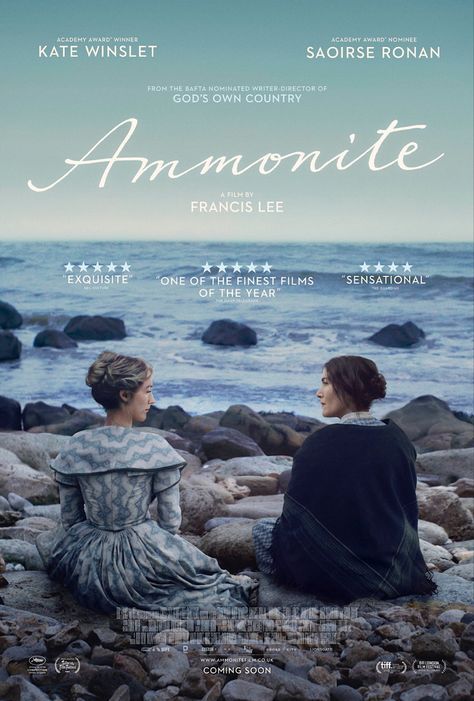

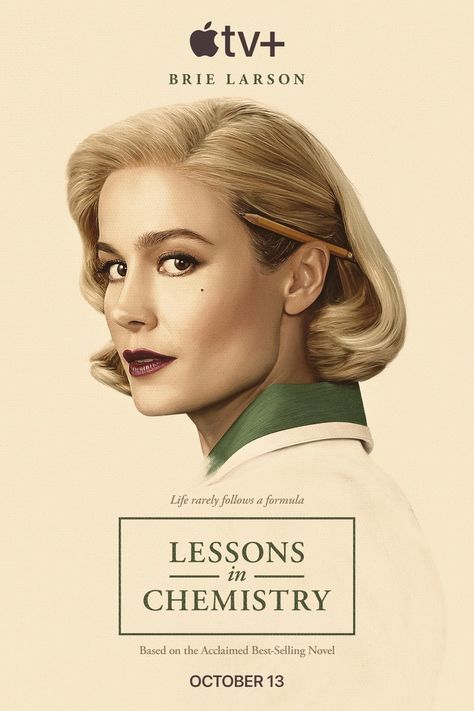
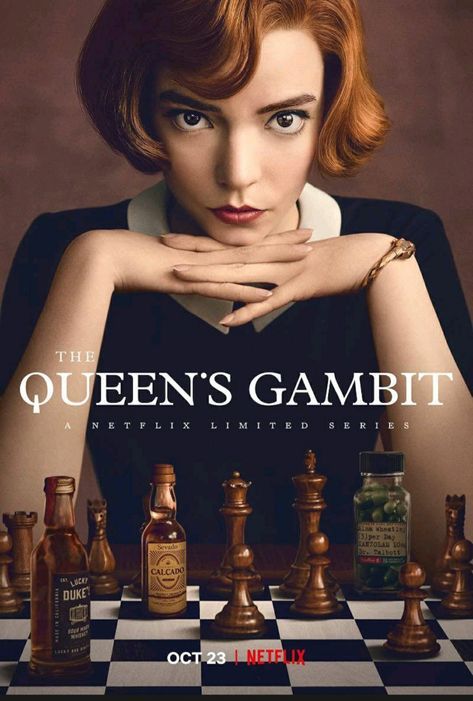
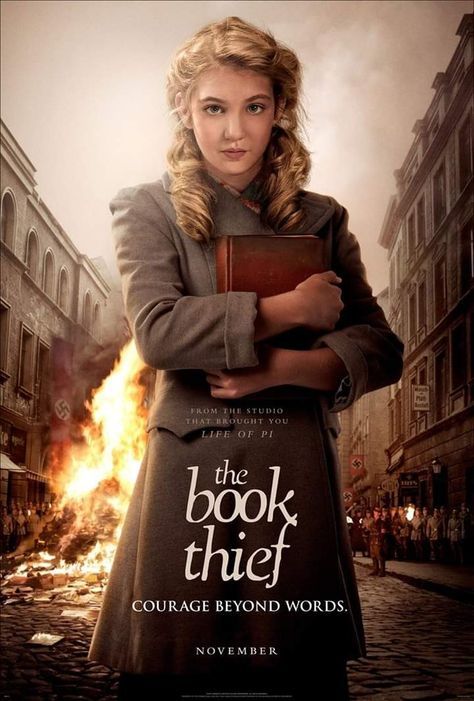
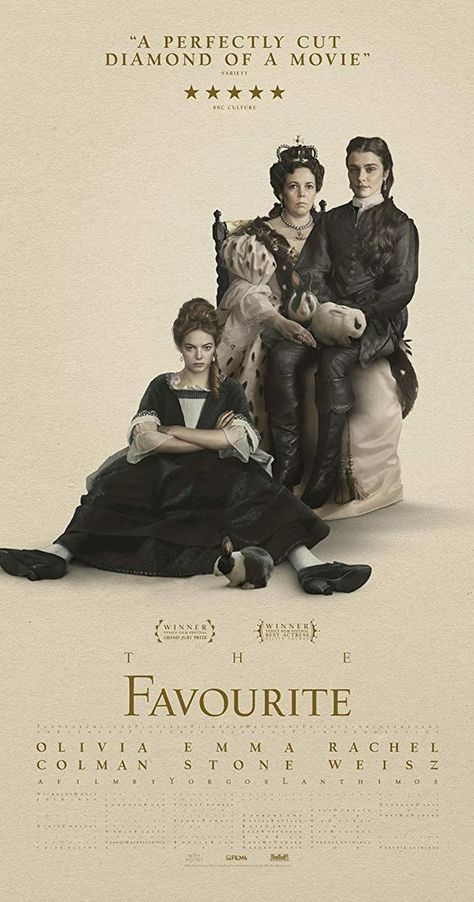
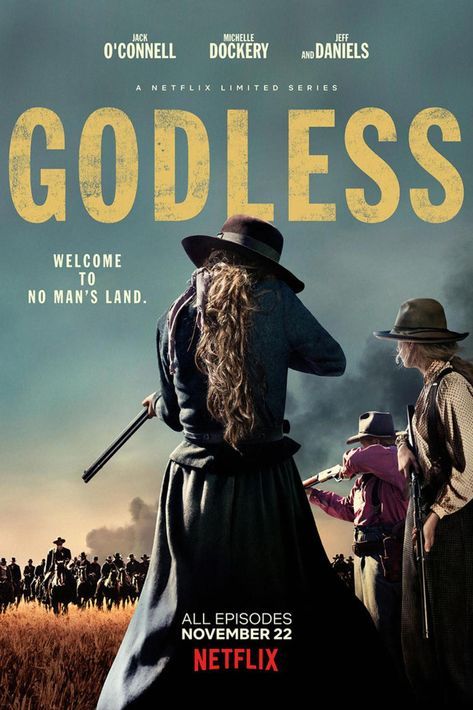
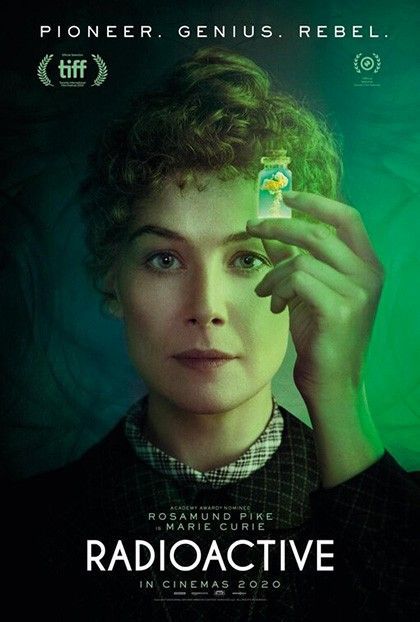
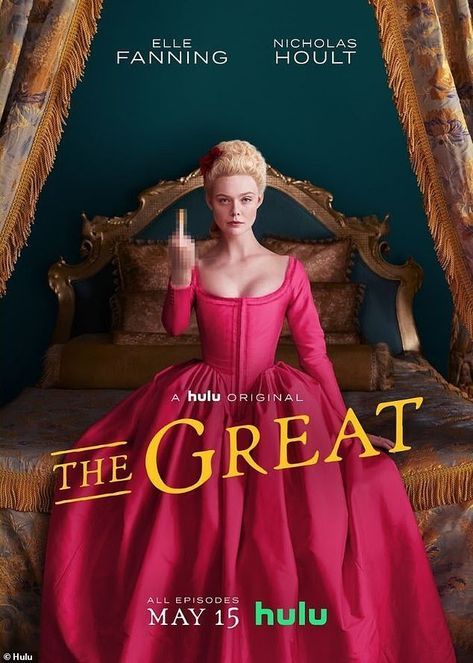
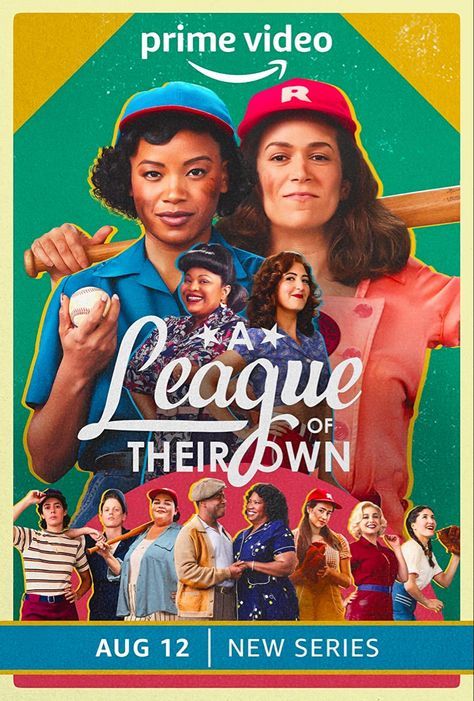
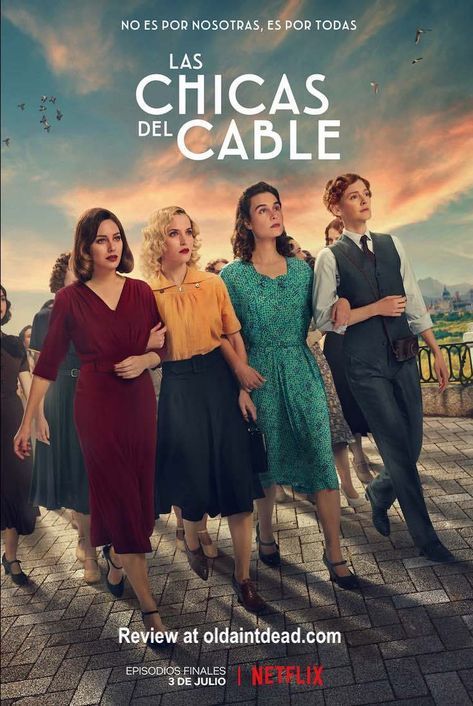
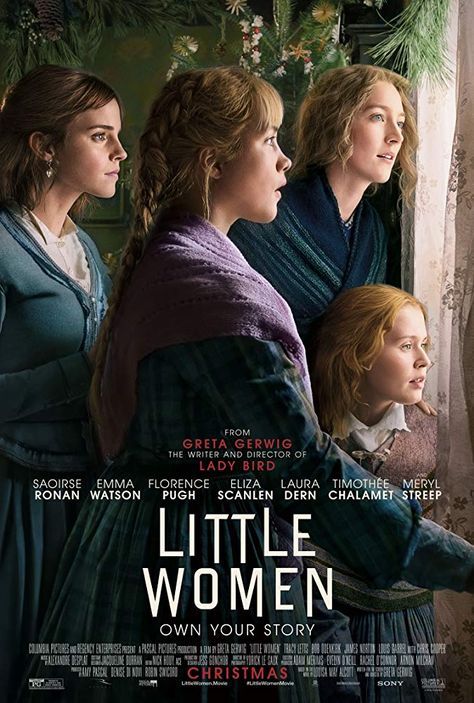
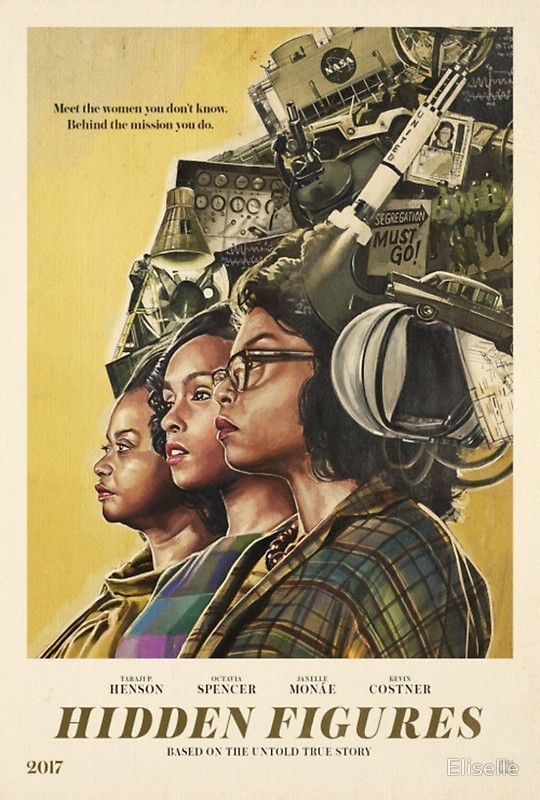
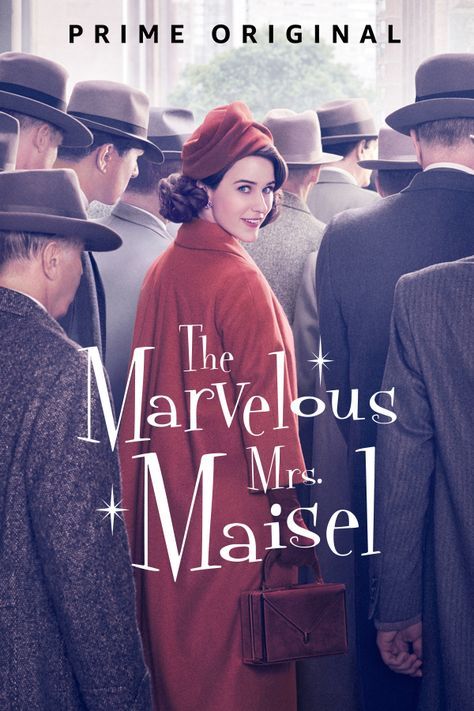
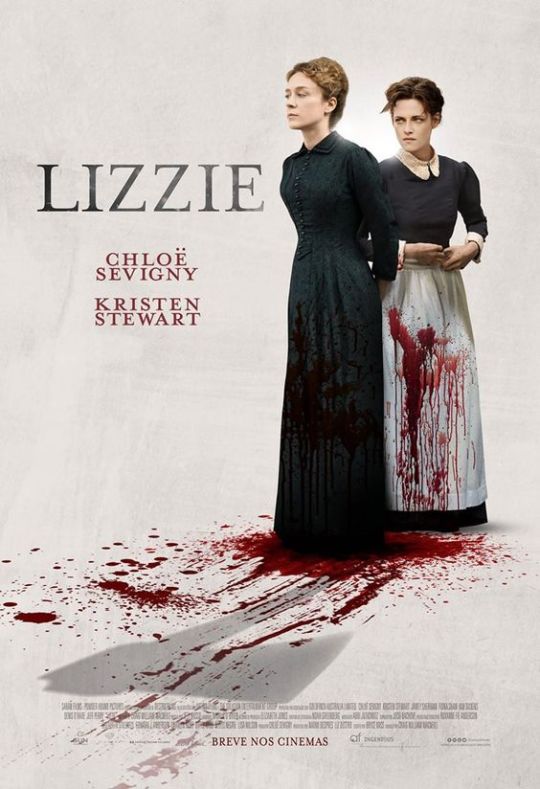
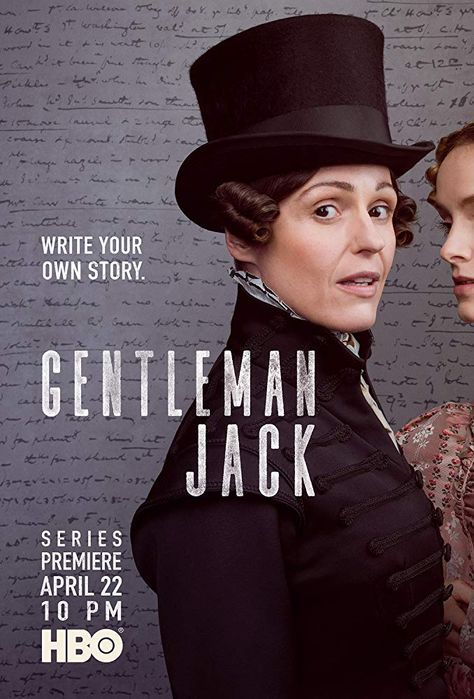
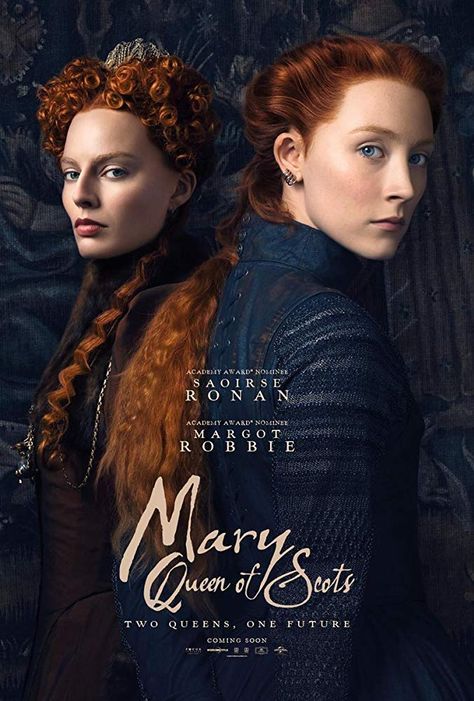
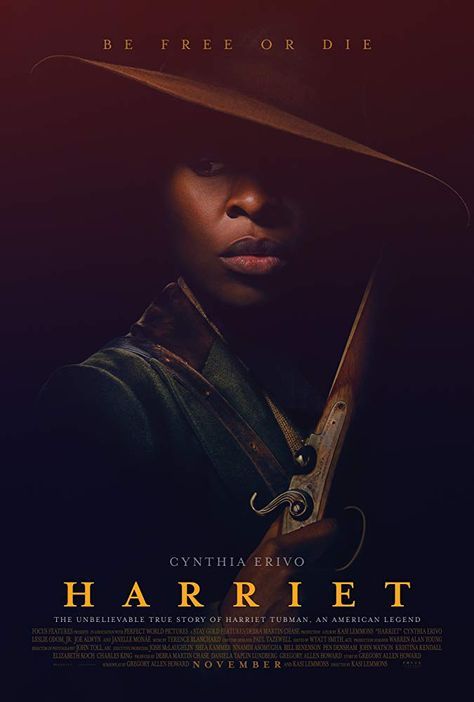
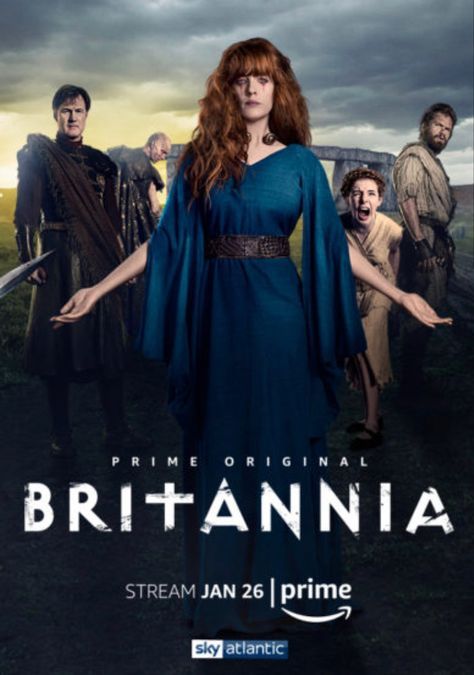
Common Themes of Media in the List:
-Workplace/general sexist discrimination
-Husband being pieces of shit and whiners
-Strong emphasis on sisterhood
-Romance plays a large part (both hetero and homo)
-Female genius and triumph
-Scheming mothers (always scheming)
-Grief, loss, and growth
-Motherhood is difficult but we pull through TM
HAVEN'T WATCHED:
Mozart's Sister
Lessons in Chemistry
The Conductor
Lizzie
Radioactive
Cable Girls
The Great
The Queen's Gambit
Britannia
Harriet
Mary Queen of Scots
ONES I LOVEDDDD:
A League of Their Own (9/10) (a favorite!)
Hidden Figures (8/10)
The Woman King (8/10) (a favorite!)
Anne With An E (9/10) (a favorite!)
Dickinson (8.5/10)
The Marvellous Mrs. Maisel (9/10) (a favorite!)
Gentleman Jack (8/10)
The Gilded Age (7.5/10)
HONORABLE (NON-LISTED MENTIONS)
The English (an english woman teams up with a native american cowboy to take revenge on the men who hurt them)
The World to Come (two women isolated by the wilderness and their husbands fall in love)
The Pursuit of Love
Colette
PERSONAL NOTES:
The Buccaneers is pretty feminist and wholesome, although oftentimes childish and full of Netflix cliches (even though it's an Apple TV original). It tries very hard to be Dickinson and Little Women but is a far cry away from Dickinson's edge and fierceness and Little Women's maturity and realism. It's more interested in appealing to Bridgerton audiences and its worse for it. But it's still full of the nice stuff, like strong female friendships and sisterhoods. Ooh, and lesbians! It's adamantly female-centric.
As for Little Women, I prefer the 90s version with Winona Ryder, but Greta did more justice to the source material than Louisa May Alcott herself in the new version.
The Book Thief and The World to Come are also tragedies, so you know. Ammonite, Portrait of a Lady on Fire, Summerland and The Favourite are lesbians and bisexuals in their full glory, although all of them have vastly different tones (The Favourite is a dark comedy, I believe).
Speaking of The Favourite, Mary & George is like that but it's men vying for the affections of the king. Don't get it twisted though, Mary, George's mom, is the protagonist and primary mover of the show. It starts and ends with her. Also, more lesbianism! (I don't get tired of pointing that out.)
Belle is one of the few autobiographical historical fictions of a black woman. My dad and I love it. It, however, does not surpass The Woman King. The Woman King is like . . . one of the best historical movies on African women I've ever watched! Or just in general! It gives so much agency to African people in the colonial age and tells the story with nuance and perspective--it is a decolonized view on the slave trade that places West African people at the center. It's pretty intense and gory, though. Like it's dark, but like the performances are insanely good, and so is the story. Real life Wakanda and all that!
#radblr#feminism#female centric stories#female stories#historical fiction#female historical fiction#entertainment#women in entertainment#hadesoftheladies rec list
130 notes
·
View notes
Text
Memoirs to Prove the Existence of the Devil
Nursed With Kerosene
Zoe Grail is best friends with the Righteous, a group of 'scoobies' who deal with supernatural threats that no one wants to discuss in public. A mysterious man offers to tear off the veil and show her what the Righteous get up to.
In-progress serial novel. 01
Six Underground
Anh Coleman and their husband spend some much needed quality time together while trapped underground, and Anh doesn't think they're alone.
Published in Beyond the Bounds of Infinity.
New Coke
Paul Conrad is the yuppie son of a billionaire who's gone through a streak of bad, bad luck, and hasn't felt like himself in awhile. When he's sent to Mexico to check in on some financial irregularities, he meets a woman of uniquely terrifying beauty.
Finished novella, unpublished.
Witch Hunt
Gerald Oakman barely remembers Gerhard Eichmann. A strange visitor drops in to remind him of a few key facts.
Finished short story, unpublished.
The Fool's Hike
Azariah and Lizard take their son hiking.
Finished flash fiction, unpublished.
Lips Cold as Ice
Tragedy Syn suffers for his art.
Finished flash fiction, unpublished.
The Feral .454 of Lizard Donner
Other barbarians have savage swords. Lizard Donner walks into fights with an oversized six-shooter, an ax, and a cloak that flows like a flaming shadow.
In-progress short story.
The Black Goat of the Desert
Holly Goodwich and Paris Conrad are two early 20th century lesbians whose relationship has stagnated lately. Hoping to spice things up, they chase a rumor through the desert.
In-progress short story.
The Wendigo?
Dr. John Silence is an arrogant man, albeit not without good reason. He may have to reconsider his conclusions and beg for help if he wants to survive the night.
Planned short story.
Lighthouse, Lighthouse
A paranormal investigator snoops around the simple lighthouse of a small town in Mexico.
Planned short story.
Swimming in a Bottle
A young boy sneaks a bottle away from the party his parents are throwing on their yacht and ends up falling into the water, only to surface in a strange lake under a sky full of black stars.
Planned short story.
Scared
A man is hounded by an entity of unfathomable horror that's out for his blood.
Planned flash fiction.
The History of the Principality of Averoigne
A short history of Averoigne, from it's de facto independence during the French Revolution to the principality that continues to exist in the modern day.
Planned short story.
Zachary Read Something He Shouldn't
It's the 1930s and Zachary Conrad's older brother tasks him with proving beyond the shadow of a doubt that their grandmother, wife of the famous cowboy hero Blue Conrad, was not Native American. As he digs into the family history, however, Zachary learns that their mother kept her own secrets.
Planned short story.
Wow!
An heiress wants nothing more than to use her family's aerospace business to drag humanity into space and meet aliens. This is the story of the worst day of her life.
Planned short story.
Time is the Final Gaol
Calamity wishes the Righteous made more of a difference. But sometimes the big picture doesn't tell the whole story.
Planned short story.
Street Heat
To reward their good behavior, Fenris, Plantagenet, Random, and Elixir are allowed to leave Blackchapel unsupervised so Plantagenet can take them to his hometown of New Orleans for Mardi Gras, but a woman who wears the head of a fursuit 24/7 ends up leading them to uncover a dangerous plot, and with the Righteous out of action, they have to take things into their own hands.
Planned short story.
Circumstances of Birth
Hera is assisted by the rest of the Bacchanalia in a quest for revenge.
Planned short story.
13 notes
·
View notes
Text

'American Primeval' Gets Its Hands Dirty
Set in 1857 amid the brutal Utah War, the Netflix series spares none of the grime and violence in its attempt to offer a fair and authentic retelling.
Howard Berger, the head of makeup on 'American Primeval,' a Netflix limited series, thought he had achieved the optimal level of grime. He prepared a makeup test - muddied necks, blackened fingernails, dirt painted inside an actor's ears - and showed it to Peter Berg's, the series's director.
Berg was unsatisfied. "'More! More!'" Berger recalled him saying. "Come on, man. Cover him in dirt, like he hasn't bathed in a year."
Berger did. "We went ahead and just kept making it more and more grungy," Berger said.
For a long time, film and TV stories of the American West ere aggressively whitewashed. Here the West is unwashed - muddy, bloddy, cold and mean. In this way, "American Primeval," a six-episode series that premieres on Jan. 9, joins recent films and series like "The English," "Meek's Cutoff," "Power of the Dog" and "Killers of the Flower Moon" in repositioning the emphases and priorities of the western. Yet Berg ("Friday Night Lights," "Painkiller," "Lone Survivor"), a director who tends to both gravitate toward and challenge traditionally macho spaces, insists that the series, set in the Utah Territory in 1857, isn't a western at all.
There are no saloons, no bordellos, no cowboys strutting up and down Main Street, in part because there are no streets. The goal, which can be seen in nearly every begrimed fame, is an unusual, often brutal authenticity, stripped of nostalgia.
"American Primeval" is set amid the real-life clashes between the U.S. Army members of the Church of Jesus Christ of Latter-day Saints and the Shoshone, Southern Paiute and Ute tribes. (The series incorporates several real-life characters, including Brigham Young, the church president and a governor of Utah, played by Kim Coates of "Sons of Anarchy.") Disagreements over sovereignty, religious exercise and territory came to a head in 1857, in a series of armed conflicts, including the Mountain Meadows Massacre, depicted, horrifically, in the series's first episode, in which church members and Paiute auxiliaries killed about 120 Westbound pioneers.
Though "American Primeval" is largely fiction, Berg felt that he owed it to this actual, gory history to offer, in painstaking detail, as much realism as he could. "You get a little bit closer to some of the origin stories of how our country was formed," Berg said of the series. "Those origin stories are very violent."
The series was shot on location, in and around Santa Fe, N.M., in 2023, with a break of several months to accommodate the SAG-AFTRA actor's strike, When I toured the set early that summer, I observed an exhaustive and sometimes exhausting commitment to realism. At a reservation near town, an exacting replica had been constructed of Fort Bridger, a trading outpost perched on a tributary of the Green River, in what today is southwest Wyoming. That set, the equivalent of eight city blocks, included an apothecary, a tannery, racks of drying fish and a trading goods store stocked with items that would have been available in 1857. Some were historical artifacts.
"Holding something that is literally from the past makes it easier to put yourself in that time period," said Dudley Gardner, an archaeologist who consulted for the show. By then, much of the fort had been burned, as the real fort was during the Utah War. Charred wood and ash mixed with mud underfoot. Nearby stood the skeletons of tepees, which were originally hung with elk and buffalo hide, dyed and stitched by Native artisans.
"One of the reasons why you don't see this level of authenticity is because it's very expensive," Berg quipped, but he wasn't exactly joking.
The show written by Mark L. Smith ("The Revenant"), centers on Betty Gilpin's Sara, a desperate woman who hires Taylor Kitsch's Isaac, a guide raise by the Shoshone, to take her and her son West. In telling this story, Smith tried not to prettify what life was like in the territory. "It's important that we represent the world as it truly was - good, bad, indifferent, ugly," he said. "Once you cheat that, it doesn't land the same."
The commitment to truth, even in the midst of fiction, extended to every department. The costume department built more than 1,300 garments and hundreds of pairs of moccasins. Artisans worked oil, powders, paints and dirt into the textiles to dye and age them. Berg told the artisans to take the age and dye further.
"It's almost like we had to take it to a theatrical level," Mila Hermanovski, a costume designer, said. "It takes the viewer there, to really feeling how these people are living. It feels oppressive, and it feels hard." Complementing the costumes were grungy makeup and greasy hair, as well as inventive prosthetics to achieve the gorier moments.
When it came to the battle sequences, the sound designers researched the weaponry of the time, creating effects both vicious and accurate. Although a gunshot from a flintlock pistol lasts only an eye blink, the sound is composed of numerous elements: the squeeze of the trigger, the strike of the firing mechanism against the flint, the ignition of the powder, the slug's passage through the barrel, the report, the impact.
On set in Santa Fe, the sound designer Whylie Stateman and his team made field recordings, paying particular attention to the wind. But there were times when authenticity ceded to tone. Berg told him that the sound had to feel tense, haunting.
"He wanted it dark," Stateman said. "So we eliminated all birds. There are no birds in "American Primeval."
Particular attention was paid to the depiction of the Native American characters, whom the western genre has often reduced to cliche or violent stereotype. The producers hired Julie L'keefe as an Indigenous cultural consultant. O'Keefe in turn hired others who could speak to the specific experiences and customs of the relevant tribes.
"The mistake is always made that one Native person knows every single answer to all 564 nations," O'Keefe said. She made sure that the production had necessary access to experts in history, culture and language. One consultant suggested that the production should name a Shoshone leader Winter Bird and not Pine Leaf.
"It's very important that directors, producers and writers see and hear us," O'Keefe added. Derek Hinkey, who plays Red Feather, a Shoshone warrior, is an enrolled member of the Fort McDermitt Paiute and Shshone Tribe. He appreciated this attention to detail, especially seeing so many Indigenous actors dressed in tribal regalia. "You walk up on set and it's wild, man," he said. "I grew up among my people. But to be in a different environment where they're all in buckskin and we're all together, it was unreal."
That feeling of realism influenced the non-Native actors, too. "Being in 6,000 layers of petticoats and a corset sprinting through fields and vaulting onto horses gave a pretty quick sense of authenticity to both my hip flexors and consciousness," Gilpin said. She added that the elements - freezing cold at night, extreme heat during a few days of desert shoots - did a lot of the acting for her.
While New Mexico offers dazzling scenery, the show mostly eschews it, preferring tight shots and close-ups. "I want the audience to feel like they're in it with our characters," Berg said. "'Primeval' is not glamorous. These folks are not in a position to sit back and enjoy the vistas. They are trying to stay alive."
On the last evening of my visit, artificial snow decorated the ground and the trees. A filter on the camera lens leached any remaining color from the scene. Kitsch, in a buffalo hide coat, his face scarred and stained, lumbered into frame. A prop gun was checked and declared safe. Then the gun was fired and another character met a sudden end. The scene was ugly, unromantic.
"The violence is [expletive] relentless," Kitsch said during a break. "But it's accurate."
In Berg's vision, that accuracy made it very American. "America was born through war and blood and death," he said. "And that's just reality. That's just the way it seems to go with humans.
14 notes
·
View notes
Note
Hellooo, I'm also writing a story in a setting inspired by late 1800s America but quite different and a bit escapist in some aspects.
I wanted to ask, how do you handle the issue of colonialism in such a story, even when the story itself doesn't strive to be historically realistic. I want to write some decent rep for some indigenous characters but what Im concerned with is..is it an alright to make my setting resemble an American environment of that time but with colonialism missing from that universe..or is it irresponsible and erasure? If I add an equivalent, how do I go about acknowledging it?
I'm sorry,.I'm aware you're not indigenous but I still wanted to ask for your general thoughts on the topic considering you're working with the same genre with a fresh inclusive perspective. Also if you know any indigenous writers/individuals who happen to be into westerns I would love to know!
ooo hi! it’s always really fun to hear about other people’s works-in-progress :’)
to start, I want to plug @writingwithcolor as a total gem of a resource !! it is run by a panel of bipoc writers. I really recommend taking the time to explore their blog: they have research guides, resource recommendations, break downs of sterotypes and tropes + very meaningful answers to many writers sending asks.
one of their moderators, Lesya, is of the Kanien'kehá:ka (Mohawk) and Wyandot (Huron) in Canada. they’ve acknowledged that since they are not from territories that have been historically associated with the “old west” (more southwestern and plains), they can’t give specifics. still, they speak as an Indigenous person and writer:
together with the other moderators, Lesya has written many posts that made me re-think a lot of things (quite literally helping reorient myself on the questions of what exactly am I trying to write, why in this setting/time period, and with whom in mind)
Is the Western genre dead?
Destroying imperialism to avoid discussing racism?
On addressing native issues in a cowboy story
Tragedy exploitation and characters of colour
Guide on Cowboys: Cowboys of Colour in the West
Alternate History and Historical Accuracy
(1800s western) non-racist White characters interacting with Black and Native people
Highlighting points from the last linked post (above) that I very much agree with + and adding some notes onto them:
consider the setting of the world, even if it is fictional, where is it inspired by?
Lesya: “the western front is a catchall and has a collection of tropes akin to Fantasy World 29, but if you want to have some grounding in history, pick a state whose history you feel you can work with and do research roughly in that geographic area (e.g what Nation or tribe you are discussing, what the state policies [of genocide] at the time were…)”
I was exited to take this as an opportunity for me to really learn more about Plains and Southwestern Indigenous history since I from the Great Lakes region of North America! I believe a foundational resource is: https://www.whose.land/en/ that gives you a starting point of whose traditional territory is the land you’re on, and/or what region and then subsequently, whose land is inspiring your story. “Indigenous” is not a monolith. Each geographical region has its own peoples, culture, history!
what is your comfort level with writing about colonialism? Is the goal historical accuracy or alternative history?
Lesya: “the 1800s was a period of pure, unadulterated racism”
Yeah 1800s is synonymous with racism. Racism was necessary to justify colonialism. It justified slavery. It justified genocide. Sciences developing “studies” and “proof” in biology and psychology at this time even helped reaffirm the idea that Black and Indigenous peoples were indeed subhuman. This was codified in laws and policies around the world. Meanwhile, industrialization and “development” was paid for with the blood and labour of marginalized peoples (the working class, migrants, and most especially, black and brown people).
Lesya: “If you’re looking for any sort of grounding in historical reality, you’re dealing with that climate. There is absolutely, positively, no way around it. There is no way to make modern anti-racism and modern levels of ignorance fit in anything grounded historically.”
that said, historical fantasy and fluffy escapism is ok, too! again, depends on your goals, capacities, intentions.
Lesya: “It’s okay if you’re not comfortable. But, you’re going to need to start looking at essentially creating a historical AU where the racism at the time was a lot less, which means colonialism at the time would be a lot less, which means ‘The Western Front’ is going to look a lot different.”
After all, the “wildness” of the “west” had in part been defined by the belief that all of this unsettled, traditional Indigenous territory was dangerous. These Lands and its inhabitants were “wild”—savage—and ought to be “tamed”.
Lesya: “If you’d rather write fluffy escapism, make Black and Native people equal for literally no reason other than you want the story to be safe for those groups to read. Pick a rough geographic area just to give your Indigenous peoples around this Western Front town a culture (or three, because the Western front is full of nomadic groups), and you’ll be fine. But it will be historical fantasy, and should really be treated as such”
finally, something I’d keep in mind is that anything you write will be biased because it came from you! After all, you are an individual with beliefs and experiences and ideas. They all impact how you carry yourself and see the world everyday, and these will impact how you interact with a fictional world too. This isn’t inherently “bad”—this should be something to keep in mind especially if you’re writing about a character with a different race, class, health, gender than you. For example, if you hold prejudice in your own life, it will probably be read in how you write certain characters, storylines, etc.
I apologize how long this took me to answer, I really had to sit down and think about this too. I hope you find this of use to you! and on the last part of the ask: I know of James Welch (Blackfoot and A'aninin), an author whose written many books set in 19th century America from the perspective of an Indigenous protagonist. Does anyone else have recommendations? In other revisionist-western/anti-western media, Los Colonos (2023) has been on my to-watch list for sometime!
8 notes
·
View notes
Note
I would like to know more about Boone and Isa 👀 What is their story? Are the connected? Are the somehow related to the gang? What are they like?
I would love to hear it!
OKOK they are rdo ocs and no way related to the gang, isa has met charles chatney briefly in a bar but thats besides the point.
isa is a 21 yr old mojave native who grew up in southern california w/ her tribe and they were forced into reservations. mojave natives are nomadic, so isa when she was 17 longed to continue that life and really couldn’t stand the mistreatment of reservation life so she left. isa meets her surrogate father, julius (my friends oc) when shes 19 after she gets into a bar fight in saint denis, years later hes murdered, she sorta goes off the deep end and feels purposeless in life, cuts her hair, its a whole thing. shes pretty stone faced, but julius brought out the good and goofiness i her, they have lots of tender moments that make my found family heart burst
boone on the other hand is a 40 yr scottish american lad, grew up middle class in the dustbowl regions of the united states. moved to the fictional rdr states when he was around 22 and got caught up in organized crime 10 years later (32). if i had to describe boone, hes a mafia cowboy hehe. hes a hitman/gun for hire for all the underground corruption that goes on in saint denis. hes…horrible. micah bell sorta guy in comparison. tall, looming, sadistic son of a bitch. he’d shoot his target in the legs so they couldnt run just so he could get a kick out of their reaction. he has no filter, womanizer (what would you call the masculine version of this? hes that too). idk hes..,something. he has a screw loose but its ok
isa and boone have interacted ONCE thats all. it was brief, no names exchanged. boone had been lounging about in the saint denis bar with some working women, as he does, isa was there too just for a drink. boone being the big talker he is sorta flirted with her, it was indirect, drunkenly and weird. isa insulted him and left, thats really it.
if u have any more questions i’d love to answer
links to oc stuff
oc pinterest board ; https://pin.it/7vcWEsqgs
isa’s playlist ; https://open.spotify.com/playlist/05OjotvrDW2o5raF8pIKN9?si=EeqGjnaxQdCYjFRNVg0iDQ&pi=u--QI__NSLRdy
boone’s playlist ; https://open.spotify.com/playlist/4gJbngAZvRAbetF3C6VRgA?si=BXCZM0mqRXyLElsjoCVdVA&pi=u-xqVLoaMySlSb
isa’s toyhouse ; https://toyhou.se/25994604.isa-mohan
boone’s toyhouse ; https://toyhou.se/27118656.boone-quinn
10 notes
·
View notes
Text
Rivals, Cowboys, and Dinosaurs: a look at Michael Crichton's Dragon Teeth

The name "Michael Crichton" should be familiar with any dinosaur enthusiast. After all, he is the man behind the famous novel Jurassic Park which was adapted into the classic film.
But this was NOT the first time Mr. Crichton took a swing at paleontology. Dragon Teeth was a previously unpublished manuscript that was described by Crichton himself as the forerunner to his second outing with the great lizards.
A historical fiction, Dragon Teeth takes place during the infamous Bone Wars, another name any dinosaur enthusiast or paleontologist should be familiar with. It was sparked by a fierce rivalry between paleontologists Othniel Charles Marsh and Edward Drinker Cope, who, from 1877 to 1892, competed to make the most discoveries, name the most species, and collect the most specimens out of the Wild West. Needless to say, it was a fascinating and dangerous period in paleontological history, particularly with the Indian Wars raging all around them, the almost lawless wilderness far from civilization, and the extreme lengths both men went to denying each other of specimens.
This is the backdrop our main character, William Johnson, finds himself in. Having agreed to a bet to go out west with Professor Marsh, he's later abandoned by the paranoid paleontologist before throwing his lot in with Cope. Our hero soon finds himself in the rough and tumble Wild West in the middle of the Indian Wars, where it turns out hunting for fossils is a lot more dangerous than it is on paper.
To begin with, this book is absolutely drenched in the setting and beliefs of the time. If you want a decent idea of what the Wild West was like at the time, this provides a pretty reasonable look. Especially with how it's woven into the narrative. One of the first big threats that Johnson and Cope have to wrestle with is the approach of Sitting Bull making his way north after having dealt with Custer at the Battle of Little Bighorn. And the area as a whole is pretty lawless, with bandits and outlaws being a danger towards the latter portions of the novel.
Paleontology enthusiasts are also going to get their money's worth here. As mentioned before, Marsh and Cope are two of the central characters here and I think they're portrayed fairly well. Marsh being a paranoid recluse who nevertheless prides himself on meticulous work and building a reputation for himself. Cope is the brash and aggressive of the two, often getting into fights, and while his enthusiasm is admirable, he often rushes in making his observations or even just throwing caution into the wind. Course one of the highlights of the whole book is the confrontation between Marsh and Cope, which might as well be a masterclass in who can get as many insults in at each other as possible.
Rivalry and recklessness are some of the driving themes here of the whole novel, specifically how destructive it can be. Johnson got roped into a trip to the dangerous Wild West all on a bet with a school rival. Cope was willing to go to extreme lengths to retrieve fossils all for the sake of his grudge against Marsh that he'll drive his men to work in the face of an impending Sioux attack. Hell, I don't think it's a secret that Custer's brazen attack is given a lot of emphasis here given what the characters are up to. And at the end of the day, the rivalry does ultimately cost both Cope and Marsh everything with them sinking their entire finances and reputations just to one-up the other
Naturally, these aren't the only themes in the novel. Specifically, the colonization of America against the Native Americans is given a lot of weight in this novel. They come across buffalo herds that Cope notes that in a few years may no longer exist. The whole world of the plains Indians is described as a Lost World not too dissimilar to that of the dinosaurs. And there is a recurring theme of religion and Manifest Destiny, that some people believe the settlers were destined to occupy everywhere in America. Cope's struggles with Mormonism is actually a recurring subplot as his admiration of the dinosaurs, the concept of deep time, and evolution clashes with conventional wisdom about God and predetermined creation.
As you can tell, I reeeeeaaaaallllyyy enjoyed this novel. I thought it was a fascinating take on one of paleontology's most turbulent periods that manages to weave the setting and values in with the characters and their arcs. I think anyone who's interested in dinosaurs, paleontology, or historical fiction will appreciate this one. Especially how in some ways, this does feel like a spiritual successor to Jurassic Park. After all, the Bone Wars gave us many of our most famous dinosaurs and helped stir up interest for future generations despite their troubled history.
#dinosaur#dinosaurs#paleontology#bone wars#edward drinker cope#othniel march#dragon's teeth#michael crichton#book review
6 notes
·
View notes
Text
Many video games borrow from popular genres of literature or cinema, they pay homage or they "celebrate" them through emulation on some level or through adapting certain aesthetics. Red Dead Redemption (2010) and Red Dead Redemption 2 (2018) however only rarely borrow from the idyllic and romantic American wild west shows or pulp fiction, and when they do, they do so cynically. It borrows-or outright steals-rather from the spagetti western of the 60s, which akin to cowboy fables, tell stories of karmatic retribution on a backdrop of misery and violence. But what they borrow most of all is the story telling techniques, the music, a few character archetypes, especially among the support cast. Red Dead 1 and 2 are not fables, and while spaghetti westerns are ready to engage with matters of live and death, oppression and justice, the larger scope of the world and the state of America is a back drop or seen through glimpses where the viewer is encouraged to simply consider and then no more. Red Dead Redemption 1 and especially 2, go beyond this. They unravel the myth of the Americas. They lay it bare. The man who inherits a fortune but because of his poverty he cannot claim it, only to die. The plantation owner's son who is the head sheriff. The displaced natives who's blood is worth less than the oil on their land. Red Dead Redemption 1 and 2 is the story of the foundation of the American police state, how the dehumanizing of criminals in turn transform the poor and the marginalized to second class citizens. In Red Dead 2, these themes are mirrored inside the dynamic of the gang itself; while painting itself as a idyllic found-family style community, it's a hierarchal structure where love and support is highly conditional and only given in exchange for loyalty. I always couldn't help but notice how Dutch only calls Arthur his son when he wants something from him.
And that is why Red Dead Redemption 1 and 2 do ultimately not simply "borrow" or "pay homage", unlike the wast majority of video games. Red Dead inherits the western genre. It's not simply a celebration, it's a succession.
#I'm not saying the games are better than the classic films#Just saying they are both excellent in different ways that mirror their time!!
4 notes
·
View notes
Text
The cowboy bit is more complicated than you are addressing op.
There are rodeo cowboys who are sexually attracted to adrenaline not people.
Then you have your ranch hands. You will find a good chunk are are Native American, a good chunk are Mexican, a good chunk are Black, and a good chunk are women. Were/are they all gay no. Were/are they all straight hell no.
The biggest fiction is finding 3 white male cowboys on the same job.
Things that work in fiction but not real life
torture getting reliable information out of people
knocking someone out to harmlessly incapacitate them for like an hour
jumping into water from staggering heights and surviving the fall completely intact
calling the police to deescalate a situation
rafting your way off a desert island
correctly profiling total strangers based on vibes
effectively operating every computer by typing and nothing else
ripping an IV out of your arm without consequences
heterosexual cowboy
159K notes
·
View notes
Note
about ur posts abt male soldiers - majorly in agreement, but when romanticised stuff is taught to you, of course it’s present in your writing. don’t best urself up for having it!! (if i read the post correctly that is.) if you’re hesitant to let go of it you could write abt the way military systems take advantage of poor boys or something. but anyway i also just wanted to say it’s nice to see someone say what im thinking. so thank u!!!! i’m not alone w hating militaries lol
ofc! like really I came to the idea of writing about soldiers through thinking about writing about knights, which were also romanticized to the point that the knight in romantic literature and knights as they existed in real life are like entirely different things. to be honest i Am hesitant to let go of it... i did plan on writing about how a poor boy is taken advantage of only somewhat by an army but also through just cultural ideas of war and glory (like wwi style...). and there's another poor boy who's kind of aware of that but joins the army anyways because he supports the cause. it's a guerilla army for a national liberation movement so i think the situation would be different than perhaps an established country drafting its citizens.
but ya the gay romanticization of things like this is something tumblr loves to do. like cowboys -- it's probably true cowboys would get up to things with each other on lonely nights but also they are symbols of american imperialism and were responsible for massacres of native americans in the west. but tumblr likes to act like it was a brokeback mountain situation 100% of the time. And like. Ancient rome was not west hollywood with togas asdfhgsdkhfgfdjk.
but in the end i want to write about communism and gender and the 20th century so i think about soldiers fighting for a fictional cause (that albeit closely resembles real-life ones). I just don't want to forget about how soldiers actually are in real life yk. or spread any misconceptions about what soldiers actually are like
0 notes
Text

HOW MUCH OF THESE HILLS IS GOLD by C Pam Zhang
RELEASE DATE: April 7, 2020
A first-time novelist explores timely questions about home and belonging in a story set during the gold rush in a reimagined American West.
Even now, when most of what used to be the Wild West has begun to look like everywhere else—a few big cities spread out among sprawling suburbs full of chain restaurants and strip malls, connected by interstate highways and digital networks—a mythic version of this part of the country endures alongside the reality. That there is a place where anyone can strike it rich or, failing that, at least live free is one of the stories Americans love to tell ourselves. Zhang plays with this duality in her brutally lyrical debut. Lucy and Sam’s family left China for North America with the idea that their father, Ba, would become a prospector. The gold rush is over before they get there, though; he ends up mining coal instead. Sam’s daydreams of being a cowboy exist alongside the naked racism his family endures, but the romantic wish to be an outlaw comes true when Lucy and Sam are forced to flee their small mining village after their father’s death, taking his corpse with them because they lack the means to give it the burial that will let his ghost rest. As they travel through desiccated landscapes littered with the bones of tigers and buffalo, Lucy and Sam meet archetypes we think we know from Westerns, but they are stripped of romance. The journey of these two children—and the backstories of their parents—force us to confront just how White the history we’ve been taught is. Aside from fictions—some fanciful inventions, some hateful lies—about Native Americans, we don’t hear much about the experiences of people of color and immigrants in shaping the West. Zhang asks readers to acknowledge a legacy we have been taught to ignore by creating a new and spellbinding mythology of her own.
Aesthetically arresting and a vital contribution to America’s conversation about itself.
0 notes
Text
I think this last paragraph simplifies the aesthetic inspirations of both Tolkien and modern RPGs here. There is a lot of "cowboys vs indians" western genre influence in Tolkien, he himself freely admitted to influenced by stories of "red indians, probably James Fenimore Cooper's stories, which is one of the main roots of the western genre. And he also admitted to being influenced by the arch-colonialist adventure fantasy stories of H. Rider Haggard.
That is not to say that the western influence on modern fantasy comes from Tolkien, at least not entirely. And that's because dungeons and dragons, fantasy ttrpgs and video games have other literary influences as well. The influence of Tolkien is undeniable, you can see that in dnd and other games cribbing words and concepts like "orcs" and "halflings" directly from Tolkien.
But the other major literary influence, and arguably the bigger one, is the tradition of pulp fantasy "sword and sorcery" fiction. The stories of Robert E. Howard, Fritz Leiber and Michael Moorcock are huge influences on DnD and fantasy tabletop and video games. A lot of early published DnD adventure modules are sword and sorcery tales rather than tolkienian high fantasy. The entire idea of lawful vs chaotic alignments is an adaptation of Moorcock's central theme of order vs. chaos.
And i think a lot of the western influences come straight from that pulp fantasy tradition. The pulp adventure story formula was very similar regardless of whether the story was a western, a "Jungle adventure" story, hardboiled detective story, science fiction or fantasy. The famous Lester Dent pulp formula is applicable regardless of genre, which in the pulps was more aesthetic trappings than anything. The genres inevitably influenced each other. Robert E. Howard wrote westerns and actually transitioned into primarily a western writer by the time he died.
That's why your average DnD adventure module reads like a pulp western, it's following a related pulp genre. And that's why dnd-style orcs often feel like the stereotypical native american in western stories, they fulfill the same narrative purpose.
But I mostly agree with the OP, Tolkien's orcs I think are less representative of tribal natives, but of a degeneracy narrative. Merry old England threatened by the degenerating forces of urbanization and industrialization. Racism, anti-semitism and white supremacy are deeply inherent to this deeply reactionary narrative. But it's a different racist narrative from the colonialist narrative of bringing the benefits of industrial civilization to the primitives. I suspect the reason Tolkien loved stories of native americans was because he loved seeing them portrayed as the noble savage which rhymed with his reactionary primitivist anti-modern outlook.
I saw this mentioned as a bit of an aside on another post but since it was a little bit besides the point of that post decided to make my own post about it instead of derailing that one.
It IS very interesting how in Lord of The Rings orcs are the soldiers of a (compared to the rest of the world) highly industrialized and technologically advanced military force, yet pretty much every high fantasy media that has borrowed the concept of orcs since then has instead given them the "tribal savages" treatment, and i don't know how I failed to realize that difference until I saw someone else bring it up.
Like of course this is not saying that the depiction of orcs in LoTR is not problematic for a lot of different reasons (there have been years of discussions unpacking that) but it IS an interesting change and I think a pretty ideologically loaded one.
Thinking about it makes me remember this article I read a few years ago about how, regardless of genre trappings, a lot of high fantasy (especially in ttrpgs and videogames) actually has a lot more in common narratively and thematically with wild west ""cowboys vs indians"" films and shows than it has with its aesthetic inspirations. Like once you look at it with that lense in mind it becomes really conspicuous how much these works like giving the "tribal savages" treatment to any sapient creature that exists for the heroes to fight.
11K notes
·
View notes
Text
Adam Beach
was born in Ashern, Manitoba, the son of Sally and Dennis Beach, and was raised on the Dog Creek First Nations Reserve, with his two brothers. A troubled childhood saw his mother killed by a drunk driver, and his alcoholic father drowned only weeks afterward. The three brothers went to live with their grandmother and then with their uncle and aunt in Winnipeg, where Adam joined drama classes and began acting in local theatre productions.
Since then he has appeared in over 60 films and television programs. His performance in the Academy Award-nominated Clint Eastwood-directed Flags of Our Fathers (2006) was phenomenal. He played Ira Hayes, a Pima Native American who was one of the six US Marines to raise the American flag on Iwo Jima and who found the resulting fame hard to handle, subsequently giving way to alcoholism. This alone would have been an emotional role for Adam to play; however, during filming, both his grandmother and best friend passed away. His role as Hayes is both realistic and heartbreaking, earning him two Best Supporting Actor Award Nominations. He stands out well above the rest of the cast.
Adam has been further nominated for three Awards for his role in Bury My Heart at Wounded Knee (2007) including a Golden Globe. He has put in terrific performances in the comedy film Joe Dirt (2001) and the John Woo World War II war epic Windtalkers (2002) in which he co-starred with Nicolas Cage.
He headlined the cast in the Walt Disney production Squanto: A Warrior's Tale (1994), featured in John Singleton's Four Brothers (2005) and starred with Harrison Ford and Daniel Craig in the science fiction-western smash hit Cowboys & Aliens (2011). He had a starring recurring role in Law & Order: Special Victims Unit (1999) and Big Love (2006).
In 2016, he played Christopher Weiss / Slipknot in the supervillain film Suicide Squad (2016).
Adam hopes to be appointed leader of his Lake Manitoba First Nation.
- IMDb Mini Biography By: Matt Lee-Williams
[on his role in Arctic Air (2012)] I do a lot of inspirational talks for kids, to motivate them to change their lives and give them hope. And I found that this character shares a lot of those qualities. A lot of the communities I connect to get their inspiration from television and YouTube. I felt that this character could reach out to them and really connect. He's a character who's struggling with himself. He's trying to get back in touch with the person he once was.
[on First Nations people in Canada, and their treaty rights] I'm asking what is anybody doing right now to propel anything? All they are after is how we get that land that the Indians have by using our power to take away our rights. You can't propel a nation to move forward if all you are doing is taking something from them.
I feel I will always have that spirit bear with me, so I will always feel protected.
We're not going anywhere. We are never going to give up our sovereignty. We will always advance and we will always rise above any conflict.
0 notes
Text
An Excerpt from "Riding the Cinematic Range"

In the expansive world of Western cinema, the canvas upon which a director paints is not merely a blank slate but a rich tapestry woven with threads of history. To embark on the journey of crafting an epic Western, the director must first pioneer the frontier of historical accuracy, meticulously recreating the bygone eras that define the Wild West.
The Essence of Pioneering: At the heart of the Western genre lies the spirit of pioneering—the relentless pursuit of new horizons, the clash of cultures, and the shaping of a nation. In this chapter, we delve into the essence of pioneering, understanding the historical forces that propelled individuals into the vast unknown. From the Oregon Trail to the gold rush fever, the director immerses themselves in the narratives that define the era, capturing the pioneering spirit that breathes life into the Western canvas.
The Cultural Cauldron: The Wild West wasn't a monolithic landscape but a melting pot of diverse cultures, each contributing to the vibrant mosaic of frontier life. The director explores the intricate cultural dynamics between settlers, Native Americans, and immigrants. Through meticulous research, they uncover the nuances of language, customs, and traditions, ensuring that the historical canvas reflects the kaleidoscope of identities that coexisted in the West.
Frontiers and Foes: As the director pioneers the historical canvas, they confront the challenges that defined the frontier. Outlaws, lawmen, and the struggles for survival become integral components of the narrative. The historical reality of gunfights, cattle drives, and the ever-present tension between order and chaos is woven into the fabric of the director's vision. By understanding the frontiers and foes of the Wild West, they authentically portray the conflicts that shaped the landscape.
Landscapes of Change: The historical canvas extends beyond human interactions to embrace the evolving landscapes that bore witness to transformation. From the expansion of the railroads to the encroachment upon indigenous territories, the director studies the geographical shifts that echo the societal changes of the time. The land itself becomes a character, reflecting the scars of progress and the relentless march of civilization into the untamed wilderness.
Characters in the Dust: In the dust of history, characters emerge—real and fictional—whose stories embody the pioneering spirit. The director delves into the lives of explorers, homesteaders, and those who defied the status quo. By studying the biographies of historical figures and drawing inspiration from their struggles and triumphs, the director populates their canvas with characters who resonate with authenticity and depth.
The Dialogue of Time: Language is a crucial brushstroke on the historical canvas, and the director meticulously crafts the dialogue to capture the cadence of the era. Slang, idioms, and the unique lexicon of the Wild West are harnessed to transport audiences into a time where every word is laden with the weight of history. The dialogue becomes a time machine, bridging the gap between the present and the past.
Authenticity in Details: Pioneering the frontier demands an unwavering commitment to authenticity in details. From costumes to props, every element on the historical canvas is a testament to the director's dedication. Through collaboration with costume designers, historians, and set decorators, the director ensures that even the smallest details, from the cut of a cowboy's vest to the design of a saloon door; transport the audience to an era long gone.
Challenges of Representation: As the director pioneers the historical canvas, they confront the challenges of representing a complex and often controversial period. The delicate balance between historical accuracy and cultural sensitivity becomes a tightrope walk. By acknowledging the nuances of the past and presenting it with a critical lens, the director navigates the potential pitfalls of misrepresentation, ensuring a thoughtful and respectful portrayal.
Research as a Creative Catalyst: In the realm of historical filmmaking, research is not merely a scholarly pursuit but a creative catalyst. The director immerses themselves in primary sources, archival materials, and accounts of the time, finding inspiration in the forgotten corners of history. By transforming research into a wellspring of creativity, the director breathes life into their historical canvas, infusing it with vitality and resonance.
0 notes
Text
Lynn Downey Dude or Die #DudeRanch #HistoricalFiction #WomensFiction #WesternWomen #BlogTour #TheCoffeePotBookClub @WriterLynnD @cathiedunn

FEATURED AUTHOR: LYNN DOWNEY I am pleased to host Lynn Downey the featured author in The Coffee Pot Book Club Blog Tour being held between February 12th — March 4th, 2024. Lynn Downey is the author of the Historical Fiction, Dude or Die (H Double Bar Dude Ranch series), released by Pronghorn Press on October 15 2023 (328 pages) Below are highlights of Dude or Die, Lynn Downey'a author bio, and her fascinating guest post about the American dude ranch where you find the touch of a cowboy and the thrill of the West. Tour Schedule Page: https://thecoffeepotbookclub.blogspot.com/2024/01/blog-tour-dude-or-die-by-lynn-downey.html HIGHLIGHTS: DUDE OR DIE Dude or Die (H Double Bar Dude Ranch series) by Lynn Downey Blurb: It's 1954, and San Francisco writer Phoebe Kelley is enjoying the success of her first novel, Lady in the Desert. When Phoebe’s sister-in-law asks her to return to Tribulation, Arizona to help run the H Double Bar Dude Ranch, she doesn’t hesitate. There’s competition from a new dude ranch this year, so the H Double Bar puts on a rodeo featuring a trick rider with a mysterious past. When accidents begin to happen around the ranch, Phoebe jumps in to figure out why, and confronts an unexpected foe. And a man from her own past forces her to confront feelings long buried. Dude or Die is the second book in the award-winning H Double Bar Dude Ranch series. Buy Link: This title is available to read on #KindleUnlimited. Universal Buy Link: https://books2read.com/u/b5BVwp AUTHOR BIO: LYNN DOWNEY Lynn Downey is an award-winning novelist, short story writer, historian of the West, and native Californian. She was the Historian for Levi Strauss & Co. in San Francisco for 25 years. Her adventures as ambassador for company history took her around the world, where she spoke to television audiences, magazine editors, and university students, appeared in numerous documentaries, and on The Oprah Winfrey Show. She wrote many books and articles about the history of the company and the jeans, and her biography, Levi Strauss: The Man Who Gave Blue Jeans to the World, won the Foreword Reviews silver INDIE award. Lynn got interested in dude ranches during her time at Levi’s. Her debut historical novel, Dudes Rush In, is set on an Arizona dude ranch in the 1950s; Arizona because she’s a desert rat at heart, and the 1950s because the clothes were fabulous. Dudes Rush In won a Will Rogers Medallion Award, and placed first in Arizona Historical Fiction at the New Mexico-Arizona book awards. The next book in this series, Dude or Die, was released in 2023. And just for fun, Lynn wrote a screenplay based on Dudes Rush In, which is currently making the rounds of reviewers and competitions. She pens short stories, as well. “The Wind and the Widow” took Honorable Mention in the History Through Fiction story contest, and “Incident at the Circle H” was a Finalist for the Longhorn Prize from Saddlebag Dispatches. The story “Goldie Hawn at the Good Karma Café,” won second place in The LAURA Short Fiction contest from Women Writing the West, and is based on her experiences in a San Francisco religious cult in the 1970s. (That will be another book one of these days.) Lynn’s latest nonfiction book is American Dude Ranch: A Touch of the Cowboy and the Thrill of the West, a cultural history of the dude ranch. It was reviewed in The Wall Street Journal, True West, Cowgirl, and The Denver Post, and was a Finalist for the Next Generation INDIE Award in Nonfiction. Kirkus Reviews said the book is “…deeply engaging and balances accessible writing style with solid research.” When she’s not writing, Lynn works as a consulting archivist and historian for museums, libraries, cultural institutions, and businesses. She is the past president of Women Writing the West, a member of the Western Writers of America, and is on numerous boards devoted to archives and historic preservation. Lynn lives in Sonoma, California, where she sometimes makes wine from the Pinot Noir grapes in her back yard vineyard. Author Links: Website: https://www.lynndowney.com Tumblereads blog: https://tumblereadsblog.com/blog-sg/ Twitter: https://twitter.com/WriterLynnD Facebook: https://www.facebook.com/lynndowney/ LinkedIn: https://www.linkedin.com/in/lynn-downey-b82460249/ Instagram: https://www.instagram.com/lynn.downey.historian/ Bluesky: https://bsky.app/profile/westernhistorygal.bsky.social Pinterest: https://www.pinterest.com/WesternHistoryGal/ Amazon Author Page: https://www.amazon.com/stores/Lynn-Downey/author/B001IXQ2N2 GUEST POST: DEBORAH SWIFT My two historical novels, Dudes Rush In, and the new sequel, Dude or Die, are both set on a fictional Arizona dude ranch in the 1950s. Even my most recent work of history is about this topic, American Dude Ranch: A Touch of the Cowboy and the Thrill of the West. I love the concept of the dude ranch: a place where you can go and live the cowboy life for a few days. This vacation destination began in the 1880s, and today you can do everything from helping the ranchers herd cattle, to getting a spa treatment in a room with views of cactus-studded mountains. Working as the company historian for Levi Strauss & Co. in San Francisco sparked my interest in dude ranching, because the company made clothing specifically for men and women to wear on ranches: the jeans and jackets, of course, but also gabardine riding pants, wildly patterned western shirts, and shiny satin rodeo shirts with embroidery on the yoke. Most people who visited dude ranches – especially early in their history – came from the eastern states or even countries across the oceans. So, everything from riding a horse with a western saddle, to wearing clothing they never wore at home, meant a dude ranch vacation made memories guests couldn’t get anywhere else. Dude ranches are an endless source of stories, including tales of the famous and infamous, who have also enjoyed going to ranches over the years. These include presidents and presidential family members (which seems appropriate for February, the month Americans celebrate President’s Day). Theodore Roosevelt is at the top of this list. In 1883 he was a rising political star, as well as an author and a well-known outdoorsman. In that year he decided to head West to shoot a buffalo, and a friend recommended going to Medora, North Dakota, a tiny town on the Little Missouri River, where he would find abundant game. He was so taken with the area that he bought a place called the Chimney Butte Ranch, known locally as the Maltese Cross for the design of its cattle brand. He went back home to New York and managed the ranch from afar. Also in the area were the Eaton brothers of Pittsburgh, who the year before had started up the very first dude ranch on their own cattle spread. Although they would move to Wyoming in 1903, they took in a lot of guests at their place near Medora. In 1884, Theodore Roosevelt’s world collapsed: his mother and wife died on the same day. To deal with his grief, Roosevelt went West, where he hoped to heal. He arrived at his ranch in June and met the Eaton brothers, and also spent time with other ranchers in the area. The locals liked him, but they branded him a “dude” for the way he dressed. In the 1880s, a “dude” was a man who was a little too fancy to be considered really masculine. Within just a couple of decades, as the dude ranch industry grew, the word would come to mean someone who came West from somewhere else, to spend time on a dude ranch. Anyway, Roosevelt apparently loved wearing buckskins, and Howard Eaton – the driving force behind the first dude ranch – knew that was not very practical. He once said of Roosevelt, “Buckskin shirts were all right as long as they didn’t get wet, but when they got wet they’d shrink up. I never did like that buckskin hunting shirt he had but he wouldn’t have anything else.” The future president kept his ranch until about 1887, and then he sold off his cattle interests. His Maltese Cross cabin is now part of Theodore Roosevelt National Park in North Dakota. But the Roosevelt dude ranch story doesn’t end there. His oldest daughter, Alice Roosevelt Longworth, inherited his love of the West, especially the Rocky Mountain region. In August of 1969 she arrived in Cody, Wyoming for her fourth dude ranch vacation. She was 85 years old, and stayed at the Sunlight Ranch, run by Faye and Don Snyder about 45 miles from Cody. Faye Snyder said Alice was a real character, which is not a surprise. She was famous for some version of this line, “If you don’t have anything nice to say about anybody, come sit next to me.” One day during Alice’s time at the ranch, the Snyders’ daughter Sally answered the office phone. She then ran to her mother saying, “Mom, the president wants to talk to Mrs. Longworth, where is she?” They tracked Alice down, and she took the call on the phone in the staff dining room. Faye Snyder heard her say, “Oh, hi Dick! How are you? What do you want?” And who was Dick? President Richard Nixon. Instagram Handles: @thecoffeepotbookclub Bluesky Handles: @cathiedunn Read the full article
0 notes
Text
westerns?
Westerns are a captivating genre of fiction typically set in the American frontier during the period between the California Gold Rush of 1849 and the closing of the frontier in 1890. These tales often revolve around themes of justice, freedom, rugged individualism, and the national history and identity of the United States. Let’s explore some key characteristics of Westerns:
Stories and Characters:
The classic Western often presents a morality drama, highlighting the conflict between wilderness and civilization.
Male protagonists—drifters, cowboys, or gunslingers—ride horses, armed with revolvers and rifles. They wear iconic Stetson hats, neckerchief bandannas, vests, and cowboy boots with spurs.
Women typically play secondary roles as love interests or provide comic relief. Saloon girls, prostitutes, and pioneer wives also appear.
Recurring characters include Native Americans, African Americans, Chinese Americans, law enforcement officers, outlaws, bartenders, and settlers.
Locations:
Westerns emphasize the harshness of the wilderness. The action unfolds in arid, desolate landscapes—deserts and mountains.
The vastness of the terrain contributes to the genre’s mythic vision of the American West.
Music and Ambience:
Westerns are often punctuated by a distinctive music score, including American folk music and Spanish/Mexican folk tunes.
The genre popularized the Western lifestyle, country-Western music, and Western wear globally.
Subgenres and Evolution:
Some subgenres, like spaghetti Westerns, maintain standard settings and plots.
Others take Western themes into different supergenres, such as neo-Westerns or space Westerns.
Whether it’s a showdown at high noon or a cattle drive across the plains, Westerns continue to captivate audiences with their rugged spirit and timeless tales of the Old West!
1 note
·
View note